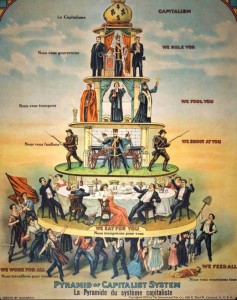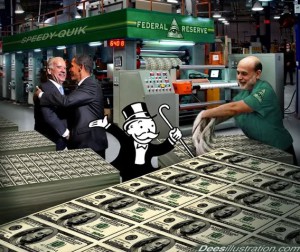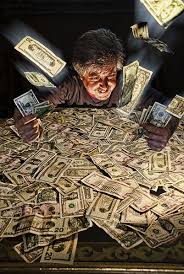This post first appeared at TomDispatch.com.

Introduction
By Tom EngelhardtOn July 14, 2011, at TomDispatch, Bill McKibben wrote that he and a few other “veteran environmentalists” had issued a call for activists to descend on the White House and “risk arrest to demand something simple and concrete from President Obama: that he refuse to grant a license for Keystone XL, a new pipeline from Alberta to the Gulf of Mexico that would vastly increase the flow of tar sands oil through the U.S., ensuring that the exploitation of Alberta’s tar sands will only increase.” It must have seemed like a long shot at the time, but McKibben urged the prospective demonstrators on, pointing out that “Alberta’s tar sands are the continent’s biggest carbon bomb,” especially “dirty” to produce and burn in terms of the release of carbon dioxide and so the heating of the planet.
Just over four years later, the president, whose administration recently green-lighted Shell to do test-drilling in the dangerous waters of the American Arctic, opened the South Atlantic to new energy exploration and drilling earlier this year, and oversaw the expansion of the fracking fields of the American West, has yet to make, or at least announce, a final decision on that pipeline. Can anyone doubt that, if there had been no demonstrations against it, if it hadn’t become a major issue for his “environmental base,” the Keystone XL would have been approved without a second thought years ago? Now, it may be too late for a variety of reasons.
The company that plans to build the pipeline, TransCanada Corporation, already fears the worst — a presidential rejection that indeed may soon be in the cards. After all, we’ve finally hit the “legacy” part of the Obama era. In the case of war, the president oversaw the escalation of the conflict in Afghanistan soon after taking office, sent in the bombers and drones, and a year ago plunged the country back into its third war in Iraq and first in Syria. Only late in his second term has he finally overseen an initiative worthy of a less warlike legacy: the embattled Iran nuclear deal. Similarly, the man who headed an “all of the above” administration on energy policy in an era in which the U.S. became “Saudi America” has only now launched a legacy-shaping climate change initiative that could matter, aimed at cutting back carbon dioxide emissions from coal-powered plants. So maybe in this legacy era, the Keystone XL will be next to fall. Or maybe Obama will let his final year and a half play out without a decision on whether or not to build it and turn the issue over to Hillary Clinton, who refuses to commit on the matter, or one of 17 Republicans, all of whom would build a pipeline to anywhere carrying anything rather than enact a single climate change initiative, no matter how mild.
Another factor has, however, entered the picture. As Michael Klare, TomDispatch’s resident energy expert and the author of The Race for What’s Left, explains, the dynamics of the energy industry may be changing in a way that could sink Canada’s vast tar sands enterprise in a sea of red ink. If so, the tar sands industry, already hit hard by the plunge in oil prices last year, may face an even more rugged future.
“If you build it, he will come” is the classic tag line from the movie Field of Dreams. For the Keystone XL pipeline, however, that might someday have to be rewritten as: “If you build it, it won’t come.” Even if built, it might prove to be a pipeline to nowhere. Let Klare explain why.
Double-Dip Oil Rout
By Michael Klare
The plunge of global oil prices began in June 2014, when benchmark Brent crude was selling at $114 per barrel. It hit bottom at $46 this January, a near-collapse widely viewed as a major but temporary calamity for the energy industry. Such low prices were expected to force many high-cost operators, especially American shale oil producers, out of the market, while stoking fresh demand and so pushing those numbers back up again. When Brent rose to $66 per barrel this May, many oil industry executives breathed a sigh of relief. The worst was over. The price had “reached a bottom” and it “doesn’t look like it is going back,” a senior Saudi official observed at the time.
Skip ahead three months and that springtime of optimism has evaporated. Major producers continue to pump out record levels of crude and world demand remains essentially flat. The result: a global oil glut that is again driving prices toward the energy subbasement. In the first week of August, Brent fell to $49, and West Texas Intermediate, the benchmark for U.S. crude, sank to $45. On top of last winter’s rout, this second round of price declines has played havoc with the profits of the major oil companies, put tens of thousands of people out of work, and obliterated billions of dollars of investments in future projects. While most oil-company executives continue to insist that a turnaround is sure to occur in the near future, some analysts are beginning to wonder if what’s underway doesn’t actually signal a fundamental transformation of the industry.
Recently, as if to underscore the magnitude of the current rout, ExxonMobil and Chevron, the top two U.S. oil producers, announced their worst quarterly returns in many years. Exxon, America’s largest oil company and normally one of its most profitable, reported a 52% drop in earnings for the second quarter of 2015. Chevron suffered an even deeper plunge, with net income falling 90% from the second quarter of 2014. In response, both companies have cut spending on exploration and production (“upstream” operations, in oil industry lingo). Chevron also announced plans to eliminate 1,500 jobs.
Painful as the short-term consequences of the current price rout may be, the long-term ones are likely to prove far more significant. To conserve funds and ensure continuing profitability, the major companies are cancelling or postponing investments in new production ventures, especially complex, costly projects like the exploitation of Canadian tar sands and deep-offshore fields that only turn a profit when oil is selling at $80 to $100 or more per barrel.
According to Wood Mackenzie, an oil-industry consultancy, the top firms have already shelved $200 billion worth of spending on new projects, including 46 major oil and natural gas ventures containing an estimated 20 billion barrels of oil or its equivalent. Most of these are in Canada’s Athabasca tar sands (also called oil sands) or in deep waters off the west coast of Africa. Royal Dutch Shell haspostponed its Bonga South West project, a proposed $12 billion development in the Atlantic Ocean off the coast of Nigeria, while the French company Total has delayed a final investment decision on Zinia 2, a field it had planned to exploit off the coast of Angola. “The upstream industry is winding back its investment in big pre-final investment decision developments as fast as it can,” Wood Mackenziereported in July.
As the price of oil continues on its downward course, the cancellation or postponement of such mega-projects has been sending powerful shock waves through the energy industry, and also ancillary industries, communities, and countries that depend on oil extraction for the bulk of their revenues. Consider it a straw in the wind that, in February, Halliburton, a major oil-services provider,announced layoffs of 7% of its work force, or about 6,000 people. Other firms have announced equivalent reductions.
Such layoffs are, of course, impacting whole communities. For instance, Fort McMurray in Alberta, Canada, the epicenter of the tar sands industry and not so long ago a boom town, has seen its unemployment rate double over the past year and public spending slashed. Families that once enjoyed six-digit annual incomes are now turning to community food banks for essential supplies. “In a very short time our world has changed, and changed dramatically,” observes Rich Kruger, chief executive of Imperial Oil, an Exxon subsidiary and major investor in Alberta’s tar sands.
A similar effect can be seen on a far larger scale when it comes to oil-centric countries like Russia, Nigeria, and Venezuela. All three are highly dependent on oil exports for government operations. Russia’s government relies on its oil and gas industry for 50% of its budget revenues, Nigeria for 75%, and Venezuela for45%. All three have experienced sharp drops in oil income. The resulting diminished government spending has meant economic hardship, especially for the poor and marginalized, and prompted increased civil unrest. In Russia, President Vladimir Putin has clearly sought to deflect attention from the social impact of reduced oil revenue by whipping up patriotic fervor about the country’s military involvement in Ukraine. Russia’s actions have, however, provoked Western economic sanctions, only adding to its economic and social woes.
No Relief in Sight
What are we to make of this unexpected second fall in oil prices? Could we, in fact, be witnessing a fundamental shift in the energy industry? To answer either of these questions, consider why prices first fell in 2014 and why, at the time, analysts believed they would rebound by the middle of this year.
The initial collapse was widely attributed to three critical factors: an extraordinary surge in production from shale formations in the United States, continued high output by members of the Organization of the Petroleum Exporting Countries (OPEC) led by Saudi Arabia, and a slackening of demand from major consuming nations, especially China.
According to the Energy Information Administration of the Department of Energy, crude oil production in the United States took a leap from 5.6 million barrels per day in June 2011 to 8.7 million barrels in June 2014, a mind-boggling increase of 55% in just three years. The addition of so much new oil to global markets — thanks in large part to the introduction of fracking technology in America’s western energy fields — occurred just as China’s economy (and so its demand for oil) was slowing, undoubtedly provoking the initial price slide. Brent crude went from $114 to $84 per barrel, a drop of 36% between June and October 2014.
Historically, OPEC has responded to such declines by scaling back production by its member states, and so effectively shoring up prices. This time, however, the organization, which met in Vienna last November, elected to maintain production at current levels, ensuring a global oil glut. Not surprisingly, in the weeks after the meeting, Brent prices went into free fall, ending up at $55 per barrel on the last day of 2014.
Most industry analysts assumed that the Persian Gulf states, led by Saudi Arabia, were simply willing to absorb a temporary loss of income to force the collapse of U.S. shale operators and other emerging competitors, including tar sands operations in Canada and deep-offshore ventures in Africa and Brazil. A senior Saudi official seemed to confirm this in May, telling the Financial Times, “There is no doubt about it, the price fall of the last several months has deterred investors away from expensive oil including U.S. shale, deep offshore, and heavy oils.”
Believing that the Saudi strategy had succeeded and noting signs of increasing energy demand in China, Europe, and the United States, many analysts concluded that prices would soon begin to rise again, as indeed they briefly did. It now appears, however, that these assumptions were off the mark. While numerous high-cost projects in Canada and Africa were delayed or cancelled, the U.S. shale industry has found ways to weather the downturn in prices. Some less-productive wells have indeed been abandoned, but drillers also developed techniques to extract more oil less expensively from their remaining wells and kept right on pumping. “We can’t control commodity prices, but we can control the efficiency of our wells,” said one operator in the Eagle Ford region of Texas. “The industry has taken this as a wake-up call to get more efficient or get out.”
Responding to the challenge, the Saudis ramped up production, achieving a record 10.3 million barrels per day in May 2014. Other OPEC members similarly increased their output and, to the surprise of many, the Iraqi oil industry achievedunexpected production highs, despite the country’s growing internal disorder. Meanwhile, with economic sanctions on Iran expected to ease in the wake of its nuclear deal with the U.S., China, France, Russia, England, and Germany, that country’s energy industry is soon likely to begin gearing up to add to global supply in a significant way.
With ever more oil entering the market and a future seeded with yet more of the same, only an unlikely major boost in demand could halt a further price drop. Although American consumers are driving more and buying bigger vehicles in response to lower gas prices, Europe shows few signs of recovery from its present austerity moment, and China, following a catastrophic stock market contraction in June, is in no position to take up the slack. Put it all together and the prognosis seems inescapable: low oil prices for the foreseeable future.
A Whole New Ballgame?
Big Energy is doing its best to remain optimistic about the situation, believing a turnaround is inevitable. “Globally in the industry $130 billion of projects have been delayed, deferred, or cancelled,” Bod Dudley, chief executive of BP,commented in June. “That’s going to have an impact down the road.”
But what if we’ve entered a new period in which supply just keeps expanding while demand fails to take off? For one thing, there’s no evidence that the shale and fracking revolution that has turned the U.S. into “Saudi America” will collapse any time soon. Although some smaller operators may be driven out of business, those capable of embracing the newest cost-cutting technologies are likely to keep pumping out shale oil even in a low-price environment.
Meanwhile, there’s Iran and Iraq to take into account. Those two countries are desperate for infusions of new income and possess some of the planet’s largest reserves of untapped petroleum. Over the decades, both have been ravaged by war and sanctions, but their energy industries are now poised for significant growth. To the surprise of analysts, Iraqi production rose from 2.4 million barrels per day in 2010 to 4 million barrels this summer. Some experts are convinced that by 2020 total output, including from the country’s semiautonomous Kurdistan region, could more than double to 9 million barrels. Of course, continued fighting in Iraq, which has already lost major cities in the north to the Islamic State and its new “caliphate,” could quickly undermine such expectations. Still, through years of chaos, civil war, and insurgency, the Iraqi energy industry has proven remarkably resilient and adept first at sustaining and then boosting its output.
Iran’s once mighty oil industry, crippled by fierce economic sanctions, has suffered from a lack of access to advanced Western drilling technology. At about 2.8 million barrels per day in 2014, its crude oil production remains far below levels experts believe would be easily attainable if modern technology were brought to bear. Once the Iran nuclear deal is approved — by the Europeans, Russians, and Chinese, even if the U.S. Congress shoots it down — and most sanctions lifted, Western companies are likely to flock back into the country, providing the necessary new oil technology and knowhow in return for access to its massive energy reserves. While this wouldn’t happen overnight — it takes time to restore a dilapidated energy infrastructure — output could rise by one million barrels per day within a year, and considerably more after that.
All in all, then, global oil production remains on an upward trajectory. What, then, of demand? On this score, the situation in China will prove critical. That country has, after all, been the main source of new oil demand since the start of this century. According to BP, oil consumption in China rose from 6.7 million barrels per day in 2004 to 11.1 million barrels in 2014. As domestic production only amounts to about 4 million barrels per day, all of those additional barrels represented imported energy. If you want a major explanation for the pre-2014 rise in the price of oil, rapid Chinese growth — and expectations that its spurt in consumption would continue into the indefinite future — is it.
Woe, then, to the $100 barrel of oil, since that country’s economy has been cooling off since 2014 and its growth is projected to fall below 7% this year, the lowest rate in decades. This means, in turn, less demand for extra oil. China’s consumption rose only 300,000 barrels per day in 2014 and is expected to remain sluggish for years to come. “[T]he likelihood now is that import growth will be minimal for the next two or three years,” energy expert Nick Butler of the Financial Timesobserved. “That in turn will compound and extend the existing surplus of supply over demand.”
Finally, don’t forget the Paris climate summit this December. Although no one yet knows what, if anything, it will accomplish, dozens of countries have already submitted preliminary plans for the steps they will pledge to take to reduce their carbon emissions. These include, for example, tax breaks and other incentives for those acquiring hybrid and electric-powered cars, along with increased taxes on oil and other forms of carbon consumption. Should such measures begin to kick in, demand for oil will take another hit and conceivably its use will actually drop years before supplies become scarce.
Winners and Losers
The initial near collapse of oil prices caused considerable pain and disarray in the oil industry. If this second rout continues for any length of time, it will undoubtedly produce even more severe and unpredictable consequences. Some outcomes already appear likely: energy companies that cannot lower their costs will be driven out of business or absorbed by other firms, while investment in costly, “unconventional” projects like Canadian tar sands, ultra-deep Atlantic fields, and Arctic oil will largely disappear. Most of the giant oil companies will undoubtedly survive, but possibly in downsized form or as part of merged enterprises.
All of this is bad news for Big Energy, but unexpectedly good news for the planet. As a start, those “unconventional” projects like tar sands require more energy to extract oil than conventional fields, which means a greater release of carbon dioxide into the atmosphere. Heavier oils like tar sands and Venezuelan extra-heavy crude also contain more carbon than do lighter fuels and so emit more carbon dioxide when consumed. If, in addition, global oil consumption slows or begins to contract, that, too, would obviously reduce carbon dioxide emissions, slowing the present daunting pace of climate change.
Most of us are used to following the ups and downs of the Dow Jones Industrial Average as a shorthand gauge for the state of the world economy. However, following the ups and downs of the price of Brent crude may, in the end, tell us far more about world affairs on our endangered planet.
The views expressed in this post are the author’s alone, and presented here to offer a variety of perspectives to our readers.










